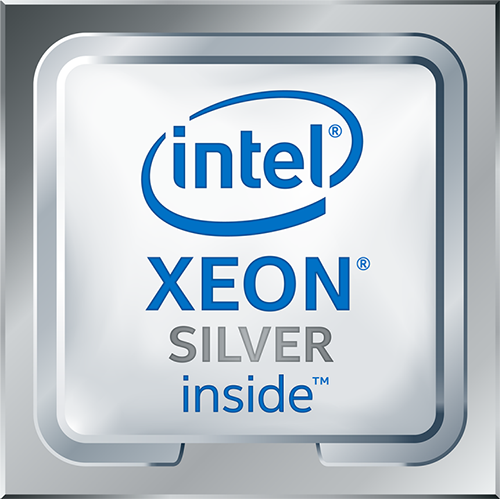

Intel® Xeon® Silver processors deliver essential performance, improved memory speed, and power efficiency, advanced security technologies, and built-in workload acceleration. Hardware-enhanced performance required for entry data center computes, network, and storage.
Discover The Benefits
Faster time to value with Intel® Select Solutions
Strong, capable platforms for the data-fueled enterprise
Next-generation platform for cloud-optimized, 5G-ready networks, and next-generation virtual networks
Breakthrough HPC and high-performance data analytics innovation
The Intel® Xeon® Scalable processor family provides the foundation for a powerful data center platform that creates an evolutionary leap in agility and scalability. Disruptive by design, this innovative processor sets a new level of platform convergence and capabilities across compute, storage, memory, network, and security. Enterprises and cloud and communications service providers can now drive forward their most ambitious digital initiatives with a feature-rich, highly versatile platform.
Key Specs - Comms Express Part No INTBX806954214:
Model
Intel® Xeon® Silver 4214 Processor
Product Collection
2nd Generation Intel® Xeon® Scalable Processors
Vertical Segment
Server
Processor Number
4214
CPU Specifications
Processor Base Frequency
2.2 GHz
Max Turbo Frequency
3.2 GHz
Cache
16.5 MB
# of UPI Links
2
TDP
(Thermal Design Power)
85 W
Memory Specifications
Max Memory Size
(dependent on memory type)
1 TB
Memory Types
DDR4-2400
Max Memory Speed
2400 MHz
TCASE
77°C
You can download a full specifications comparison sheet of Xeon Silver Scalable Processors from our "Documentation" section (above):
Enabling Greater Efficiencies and Lower TCO
Across infrastructures, from enterprise to technical computing applications, the Intel® Xeon® Scalable processor family is designed for data center modernization to drive operational efficiencies that lead to improved total cost of ownership (TCO) and higher productivity for users. Systems built on the Intel® Xeon® Scalable processor family are designed to deliver agile services with enhanced performance and groundbreaking capabilities, compared to the prior generation.
Performance to Propel Insights
Intel's industry-leading, workload-optimized platform with built-in AI acceleration, provides the seamless performance foundation for the data-centric era from the multicloud to intelligent edge, and back, the Intel® Xeon® Scalable processor family with 2nd Gen Intel® Xeon® Scalable processors enables a new level of consistent, pervasive, and breakthrough performance.
Across an evolving digital world, disruptive and emerging technology trends in business, industry, science, and entertainment increasingly impact the world's economies. By 2020, the success of half of the world's Global 2000 companies will depend on their abilities to create digitally enhanced products, services, and experiences, and large organizations expect to see an 80 percent increase in their digital revenues, all driven by advancements in technology and usage models they enable.
This global transformation is rapidly scaling the demands for flexible compute, networking, and storage. Future workloads will necessitate infrastructures that can seamlessly scale to support immediate responsiveness and widely diverse performance requirements. The exponential growth of data generation and consumption, the rapid expansion of cloud-scale computing, emerging 5G networks, and the extension of high performance computing (HPC) and artificial intelligence (AI) into new usages require that today's data centers and networks urgently evolve—or be left behind in a highly competitive environment. These demands are driving the architecture of modernized, future-ready data centers and networks that can quickly flex and scale.



Intel® Xeon® Silver processors deliver essential performance, improved memory speed, and power efficiency, advanced security technologies, and built-in workload acceleration. Hardware-enhanced performance required for entry data center computes, network, and storage.
Discover The Benefits
Faster time to value with Intel® Select Solutions
Strong, capable platforms for the data-fueled enterprise
Next-generation platform for cloud-optimized, 5G-ready networks, and next-generation virtual networks
Breakthrough HPC and high-performance data analytics innovation
The Intel® Xeon® Scalable processor family provides the foundation for a powerful data center platform that creates an evolutionary leap in agility and scalability. Disruptive by design, this innovative processor sets a new level of platform convergence and capabilities across compute, storage, memory, network, and security. Enterprises and cloud and communications service providers can now drive forward their most ambitious digital initiatives with a feature-rich, highly versatile platform.
Key Specs - Comms Express Part No INTBX806954208:
Model
Intel® Xeon® Silver 4208 Processor
Product Collection
2nd Generation Intel® Xeon® Scalable Processors
Vertical Segment
Server
Processor Number
4208
CPU Specifications
Processor Base Frequency
2.1 GHz
Max Turbo Frequency
3.2 GHz
Cache
11 MB
# of UPI Links
2
TDP
(Thermal Design Power)
85 W
Memory Specifications
Max Memory Size
(dependent on memory type)
1 TB
Memory Types
DDR4-2400
Max Memory Speed
2400 MHz
TCASE
78°C
You can download a full specifications comparison sheet of Xeon Silver Scalable Processors from our "Documentation" section (above):
Enabling Greater Efficiencies and Lower TCO
Across infrastructures, from enterprise to technical computing applications, the Intel® Xeon® Scalable processor family is designed for data center modernization to drive operational efficiencies that lead to improved total cost of ownership (TCO) and higher productivity for users. Systems built on the Intel® Xeon® Scalable processor family are designed to deliver agile services with enhanced performance and groundbreaking capabilities, compared to the prior generation.
Performance to Propel Insights
Intel's industry-leading, workload-optimized platform with built-in AI acceleration, provides the seamless performance foundation for the data-centric era from the multicloud to intelligent edge, and back, the Intel® Xeon® Scalable processor family with 2nd Gen Intel® Xeon® Scalable processors enables a new level of consistent, pervasive, and breakthrough performance.
Across an evolving digital world, disruptive and emerging technology trends in business, industry, science, and entertainment increasingly impact the world's economies. By 2020, the success of half of the world's Global 2000 companies will depend on their abilities to create digitally enhanced products, services, and experiences, and large organizations expect to see an 80 percent increase in their digital revenues, all driven by advancements in technology and usage models they enable.
This global transformation is rapidly scaling the demands for flexible compute, networking, and storage. Future workloads will necessitate infrastructures that can seamlessly scale to support immediate responsiveness and widely diverse performance requirements. The exponential growth of data generation and consumption, the rapid expansion of cloud-scale computing, emerging 5G networks, and the extension of high performance computing (HPC) and artificial intelligence (AI) into new usages require that today's data centers and networks urgently evolve—or be left behind in a highly competitive environment. These demands are driving the architecture of modernized, future-ready data centers and networks that can quickly flex and scale.



Intel® Xeon® Silver processors deliver essential performance, improved memory speed, and power efficiency, advanced security technologies, and built-in workload acceleration. Hardware-enhanced performance required for entry data center computes, network, and storage.
Discover The Benefits
Faster time to value with Intel® Select Solutions
Strong, capable platforms for the data-fueled enterprise
Next-generation platform for cloud-optimized, 5G-ready networks, and next-generation virtual networks
Breakthrough HPC and high-performance data analytics innovation
The Intel® Xeon® Scalable processor family provides the foundation for a powerful data center platform that creates an evolutionary leap in agility and scalability. Disruptive by design, this innovative processor sets a new level of platform convergence and capabilities across compute, storage, memory, network, and security. Enterprises and cloud and communications service providers can now drive forward their most ambitious digital initiatives with a feature-rich, highly versatile platform.
Key Specs - Comms Express Part No INTBX806954216:
Model
Intel® Xeon® Silver 4216 Processor
Product Collection
2nd Generation Intel® Xeon® Scalable Processors
Vertical Segment
Server
Processor Number
4216
CPU Specifications
Processor Base Frequency
2.1 GHz
Max Turbo Frequency
3.2 GHz
Cache
22 MB
# of UPI Links
2
TDP
(Thermal Design Power)
100 W
Memory Specifications
Max Memory Size
(dependent on memory type)
1 TB
Memory Types
DDR4-2400
Max Memory Speed
2400 MHz
TCASE
79°C
You can download a full specifications comparison sheet of Xeon Silver Scalable Processors from our "Documentation" section (above):
Enabling Greater Efficiencies and Lower TCO
Across infrastructures, from enterprise to technical computing applications, the Intel® Xeon® Scalable processor family is designed for data center modernization to drive operational efficiencies that lead to improved total cost of ownership (TCO) and higher productivity for users. Systems built on the Intel® Xeon® Scalable processor family are designed to deliver agile services with enhanced performance and groundbreaking capabilities, compared to the prior generation.
Performance to Propel Insights
Intel's industry-leading, workload-optimized platform with built-in AI acceleration, provides the seamless performance foundation for the data-centric era from the multicloud to intelligent edge, and back, the Intel® Xeon® Scalable processor family with 2nd Gen Intel® Xeon® Scalable processors enables a new level of consistent, pervasive, and breakthrough performance.
Across an evolving digital world, disruptive and emerging technology trends in business, industry, science, and entertainment increasingly impact the world's economies. By 2020, the success of half of the world's Global 2000 companies will depend on their abilities to create digitally enhanced products, services, and experiences, and large organizations expect to see an 80 percent increase in their digital revenues, all driven by advancements in technology and usage models they enable.
This global transformation is rapidly scaling the demands for flexible compute, networking, and storage. Future workloads will necessitate infrastructures that can seamlessly scale to support immediate responsiveness and widely diverse performance requirements. The exponential growth of data generation and consumption, the rapid expansion of cloud-scale computing, emerging 5G networks, and the extension of high performance computing (HPC) and artificial intelligence (AI) into new usages require that today's data centers and networks urgently evolve—or be left behind in a highly competitive environment. These demands are driving the architecture of modernized, future-ready data centers and networks that can quickly flex and scale.



Intel® Xeon® Silver processors deliver essential performance, improved memory speed, and power efficiency, advanced security technologies, and built-in workload acceleration. Hardware-enhanced performance required for entry data center computes, network, and storage.
Discover The Benefits
Faster time to value with Intel® Select Solutions
Strong, capable platforms for the data-fueled enterprise
Next-generation platform for cloud-optimized, 5G-ready networks, and next-generation virtual networks
Breakthrough HPC and high-performance data analytics innovation
The Intel® Xeon® Scalable processor family provides the foundation for a powerful data center platform that creates an evolutionary leap in agility and scalability. Disruptive by design, this innovative processor sets a new level of platform convergence and capabilities across compute, storage, memory, network, and security. Enterprises and cloud and communications service providers can now drive forward their most ambitious digital initiatives with a feature-rich, highly versatile platform.
Key Specs - Comms Express Part No INTBX806954210R:
Model
Intel® Xeon® Silver 4210R Processor
Product Collection
2nd Generation Intel® Xeon® Scalable Processors
Vertical Segment
Server
Processor Number
4210R
CPU Specifications
Processor Base Frequency
2.4 GHz
Max Turbo Frequency
3.2 GHz
Cache
13.75 MB
# of UPI Links
2
TDP
(Thermal Design Power)
100 W
Memory Specifications
Max Memory Size
(dependent on memory type)
1 TB
Memory Types
DDR4-2400
Max Memory Speed
2400 MHz
TCASE
84°C
You can download a full specifications comparison sheet of Xeon Silver Scalable Processors from our "Documentation" section (above):
Enabling Greater Efficiencies and Lower TCO
Across infrastructures, from enterprise to technical computing applications, the Intel® Xeon® Scalable processor family is designed for data center modernization to drive operational efficiencies that lead to improved total cost of ownership (TCO) and higher productivity for users. Systems built on the Intel® Xeon® Scalable processor family are designed to deliver agile services with enhanced performance and groundbreaking capabilities, compared to the prior generation.
Performance to Propel Insights
Intel's industry-leading, workload-optimized platform with built-in AI acceleration, provides the seamless performance foundation for the data-centric era from the multicloud to intelligent edge, and back, the Intel® Xeon® Scalable processor family with 2nd Gen Intel® Xeon® Scalable processors enables a new level of consistent, pervasive, and breakthrough performance.
Across an evolving digital world, disruptive and emerging technology trends in business, industry, science, and entertainment increasingly impact the world's economies. By 2020, the success of half of the world's Global 2000 companies will depend on their abilities to create digitally enhanced products, services, and experiences, and large organizations expect to see an 80 percent increase in their digital revenues, all driven by advancements in technology and usage models they enable.
This global transformation is rapidly scaling the demands for flexible compute, networking, and storage. Future workloads will necessitate infrastructures that can seamlessly scale to support immediate responsiveness and widely diverse performance requirements. The exponential growth of data generation and consumption, the rapid expansion of cloud-scale computing, emerging 5G networks, and the extension of high performance computing (HPC) and artificial intelligence (AI) into new usages require that today's data centers and networks urgently evolve—or be left behind in a highly competitive environment. These demands are driving the architecture of modernized, future-ready data centers and networks that can quickly flex and scale.



Intel® Xeon® Silver processors deliver essential performance, improved memory speed, and power efficiency, advanced security technologies, and built-in workload acceleration. Hardware-enhanced performance required for entry data center computes, network, and storage.
Discover The Benefits
Faster time to value with Intel® Select Solutions
Strong, capable platforms for the data-fueled enterprise
Next-generation platform for cloud-optimized, 5G-ready networks, and next-generation virtual networks
Breakthrough HPC and high-performance data analytics innovation
The Intel® Xeon® Scalable processor family provides the foundation for a powerful data center platform that creates an evolutionary leap in agility and scalability. Disruptive by design, this innovative processor sets a new level of platform convergence and capabilities across compute, storage, memory, network, and security. Enterprises and cloud and communications service providers can now drive forward their most ambitious digital initiatives with a feature-rich, highly versatile platform.
Key Specs - Comms Express Part No INTBX806734116:
Model
Intel® Xeon® Silver 4116 Processor
Product Collection
Intel® Xeon® Scalable Processors
Vertical Segment
Server
Processor Number
4116
CPU Specifications
Processor Base Frequency
2.1 GHz
Max Turbo Frequency
3.0 GHz
Cache
16.5 MB L3 Cache
# of UPI Links
2
TDP
(Thermal Design Power)
85 W
Memory Specifications
Max Memory Size
(dependent on memory type)
768 GB
Memory Types
DDR4-2400
Max Memory Speed
2400 MHz
TCASE
76°C
You can download a full specifications comparison sheet of Xeon Silver Scalable Processors from our "Documentation" section (above):
Enabling Greater Efficiencies and Lower TCO
Across infrastructures, from enterprise to technical computing applications, the Intel® Xeon® Scalable processor family is designed for data center modernization to drive operational efficiencies that lead to improved total cost of ownership (TCO) and higher productivity for users. Systems built on the Intel® Xeon® Scalable processor family are designed to deliver agile services with enhanced performance and groundbreaking capabilities, compared to the prior generation.
Performance to Propel Insights
Intel's industry-leading, workload-optimized platform with built-in AI acceleration, provides the seamless performance foundation for the data-centric era from the multicloud to intelligent edge, and back, the Intel® Xeon® Scalable processor family with 2nd Gen Intel® Xeon® Scalable processors enables a new level of consistent, pervasive, and breakthrough performance.
Across an evolving digital world, disruptive and emerging technology trends in business, industry, science, and entertainment increasingly impact the world's economies. By 2020, the success of half of the world's Global 2000 companies will depend on their abilities to create digitally enhanced products, services, and experiences, and large organizations expect to see an 80 percent increase in their digital revenues, all driven by advancements in technology and usage models they enable.
This global transformation is rapidly scaling the demands for flexible compute, networking, and storage. Future workloads will necessitate infrastructures that can seamlessly scale to support immediate responsiveness and widely diverse performance requirements. The exponential growth of data generation and consumption, the rapid expansion of cloud-scale computing, emerging 5G networks, and the extension of high performance computing (HPC) and artificial intelligence (AI) into new usages require that today's data centers and networks urgently evolve—or be left behind in a highly competitive environment. These demands are driving the architecture of modernized, future-ready data centers and networks that can quickly flex and scale.



Intel® Xeon® Silver processors deliver essential performance, improved memory speed, and power efficiency, advanced security technologies, and built-in workload acceleration. Hardware-enhanced performance required for entry data center computes, network, and storage.
Discover The Benefits
Faster time to value with Intel® Select Solutions
Strong, capable platforms for the data-fueled enterprise
Next-generation platform for cloud-optimized, 5G-ready networks, and next-generation virtual networks
Breakthrough HPC and high-performance data analytics innovation
The Intel® Xeon® Scalable processor family provides the foundation for a powerful data center platform that creates an evolutionary leap in agility and scalability. Disruptive by design, this innovative processor sets a new level of platform convergence and capabilities across compute, storage, memory, network, and security. Enterprises and cloud and communications service providers can now drive forward their most ambitious digital initiatives with a feature-rich, highly versatile platform.
Key Specs - Comms Express Part No INTBX806954214R:
Model
Intel® Xeon® Silver 4214R Processor
Product Collection
2nd Generation Intel® Xeon® Scalable Processors
Vertical Segment
Server
Processor Number
4214R
CPU Specifications
Processor Base Frequency
2.4 GHz
Max Turbo Frequency
3.5 GHz
Cache
16.5 MB
# of UPI Links
2
TDP
(Thermal Design Power)
100 W
Memory Specifications
Max Memory Size
(dependent on memory type)
1 TB
Memory Types
DDR4-2400
Max Memory Speed
2400 MHz
TCASE
79°C
You can download a full specifications comparison sheet of Xeon Silver Scalable Processors from our "Documentation" section (above):
Enabling Greater Efficiencies and Lower TCO
Across infrastructures, from enterprise to technical computing applications, the Intel® Xeon® Scalable processor family is designed for data center modernization to drive operational efficiencies that lead to improved total cost of ownership (TCO) and higher productivity for users. Systems built on the Intel® Xeon® Scalable processor family are designed to deliver agile services with enhanced performance and groundbreaking capabilities, compared to the prior generation.
Performance to Propel Insights
Intel's industry-leading, workload-optimized platform with built-in AI acceleration, provides the seamless performance foundation for the data-centric era from the multicloud to intelligent edge, and back, the Intel® Xeon® Scalable processor family with 2nd Gen Intel® Xeon® Scalable processors enables a new level of consistent, pervasive, and breakthrough performance.
Across an evolving digital world, disruptive and emerging technology trends in business, industry, science, and entertainment increasingly impact the world's economies. By 2020, the success of half of the world's Global 2000 companies will depend on their abilities to create digitally enhanced products, services, and experiences, and large organizations expect to see an 80 percent increase in their digital revenues, all driven by advancements in technology and usage models they enable.
This global transformation is rapidly scaling the demands for flexible compute, networking, and storage. Future workloads will necessitate infrastructures that can seamlessly scale to support immediate responsiveness and widely diverse performance requirements. The exponential growth of data generation and consumption, the rapid expansion of cloud-scale computing, emerging 5G networks, and the extension of high performance computing (HPC) and artificial intelligence (AI) into new usages require that today's data centers and networks urgently evolve—or be left behind in a highly competitive environment. These demands are driving the architecture of modernized, future-ready data centers and networks that can quickly flex and scale.



Intel® Xeon® Silver processors deliver essential performance, improved memory speed, and power efficiency, advanced security technologies, and built-in workload acceleration. Hardware-enhanced performance required for entry data center computes, network, and storage.
Discover The Benefits
Faster time to value with Intel® Select Solutions
Strong, capable platforms for the data-fueled enterprise
Next-generation platform for cloud-optimized, 5G-ready networks, and next-generation virtual networks
Breakthrough HPC and high-performance data analytics innovation
The Intel® Xeon® Scalable processor family provides the foundation for a powerful data center platform that creates an evolutionary leap in agility and scalability. Disruptive by design, this innovative processor sets a new level of platform convergence and capabilities across compute, storage, memory, network, and security. Enterprises and cloud and communications service providers can now drive forward their most ambitious digital initiatives with a feature-rich, highly versatile platform.
Key Specs - Comms Express Part No INTBX806734114:
Model
Intel® Xeon® Silver 4114 Processor
Product Collection
Intel® Xeon® Scalable Processors
Vertical Segment
Server
Processor Number
4114
CPU Specifications
Processor Base Frequency
2.2 GHz
Max Turbo Frequency
3.0 GHz
Cache
13.75 MB L3 Cache
# of UPI Links
2
TDP
(Thermal Design Power)
85 W
Memory Specifications
Max Memory Size
(dependent on memory type)
768 GB
Memory Types
DDR4-2400
Max Memory Speed
2400 MHz
TCASE
78°C
You can download a full specifications comparison sheet of Xeon Silver Scalable Processors from our "Documentation" section (above):
Enabling Greater Efficiencies and Lower TCO
Across infrastructures, from enterprise to technical computing applications, the Intel® Xeon® Scalable processor family is designed for data center modernization to drive operational efficiencies that lead to improved total cost of ownership (TCO) and higher productivity for users. Systems built on the Intel® Xeon® Scalable processor family are designed to deliver agile services with enhanced performance and groundbreaking capabilities, compared to the prior generation.
Performance to Propel Insights
Intel's industry-leading, workload-optimized platform with built-in AI acceleration, provides the seamless performance foundation for the data-centric era from the multicloud to intelligent edge, and back, the Intel® Xeon® Scalable processor family with 2nd Gen Intel® Xeon® Scalable processors enables a new level of consistent, pervasive, and breakthrough performance.
Across an evolving digital world, disruptive and emerging technology trends in business, industry, science, and entertainment increasingly impact the world's economies. By 2020, the success of half of the world's Global 2000 companies will depend on their abilities to create digitally enhanced products, services, and experiences, and large organizations expect to see an 80 percent increase in their digital revenues, all driven by advancements in technology and usage models they enable.
This global transformation is rapidly scaling the demands for flexible compute, networking, and storage. Future workloads will necessitate infrastructures that can seamlessly scale to support immediate responsiveness and widely diverse performance requirements. The exponential growth of data generation and consumption, the rapid expansion of cloud-scale computing, emerging 5G networks, and the extension of high performance computing (HPC) and artificial intelligence (AI) into new usages require that today's data centers and networks urgently evolve—or be left behind in a highly competitive environment. These demands are driving the architecture of modernized, future-ready data centers and networks that can quickly flex and scale.



Intel® Xeon® Silver processors deliver essential performance, improved memory speed, and power efficiency, advanced security technologies, and built-in workload acceleration. Hardware-enhanced performance required for entry data center computes, network, and storage.
Discover The Benefits
Faster time to value with Intel® Select Solutions
Strong, capable platforms for the data-fueled enterprise
Next-generation platform for cloud-optimized, 5G-ready networks, and next-generation virtual networks
Breakthrough HPC and high-performance data analytics innovation
The Intel® Xeon® Scalable processor family provides the foundation for a powerful data center platform that creates an evolutionary leap in agility and scalability. Disruptive by design, this innovative processor sets a new level of platform convergence and capabilities across compute, storage, memory, network, and security. Enterprises and cloud and communications service providers can now drive forward their most ambitious digital initiatives with a feature-rich, highly versatile platform.
Key Specs - Comms Express Part No INTBX806954210:
Model
Intel® Xeon® Silver 4210 Processor
Product Collection
2nd Generation Intel® Xeon® Scalable Processors
Vertical Segment
Server
Processor Number
4210
CPU Specifications
Processor Base Frequency
2.2 GHz
Max Turbo Frequency
3.2 GHz
Cache
13.75 MB
# of UPI Links
2
TDP
(Thermal Design Power)
85 W
Memory Specifications
Max Memory Size
(dependent on memory type)
1 TB
Memory Types
DDR4-2400
Max Memory Speed
2400 MHz
TCASE
78°C
You can download a full specifications comparison sheet of Xeon Silver Scalable Processors from our "Documentation" section (above):
Enabling Greater Efficiencies and Lower TCO
Across infrastructures, from enterprise to technical computing applications, the Intel® Xeon® Scalable processor family is designed for data center modernization to drive operational efficiencies that lead to improved total cost of ownership (TCO) and higher productivity for users. Systems built on the Intel® Xeon® Scalable processor family are designed to deliver agile services with enhanced performance and groundbreaking capabilities, compared to the prior generation.
Performance to Propel Insights
Intel's industry-leading, workload-optimized platform with built-in AI acceleration, provides the seamless performance foundation for the data-centric era from the multicloud to intelligent edge, and back, the Intel® Xeon® Scalable processor family with 2nd Gen Intel® Xeon® Scalable processors enables a new level of consistent, pervasive, and breakthrough performance.
Across an evolving digital world, disruptive and emerging technology trends in business, industry, science, and entertainment increasingly impact the world's economies. By 2020, the success of half of the world's Global 2000 companies will depend on their abilities to create digitally enhanced products, services, and experiences, and large organizations expect to see an 80 percent increase in their digital revenues, all driven by advancements in technology and usage models they enable.
This global transformation is rapidly scaling the demands for flexible compute, networking, and storage. Future workloads will necessitate infrastructures that can seamlessly scale to support immediate responsiveness and widely diverse performance requirements. The exponential growth of data generation and consumption, the rapid expansion of cloud-scale computing, emerging 5G networks, and the extension of high performance computing (HPC) and artificial intelligence (AI) into new usages require that today's data centers and networks urgently evolve—or be left behind in a highly competitive environment. These demands are driving the architecture of modernized, future-ready data centers and networks that can quickly flex and scale.

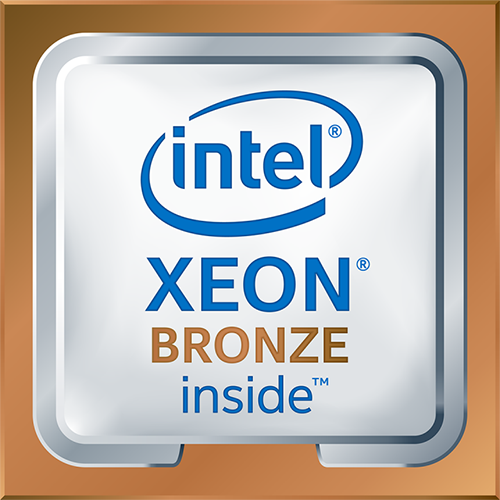

Intel® Xeon® Bronze processors deliver entry performance for small business and basic storage servers. Hardware-enhanced reliability, availability, and serviceability features designed to meet the needs of these entry solutions.
Features and Benefits
Hardware-Enhanced Reliability
Experience the difference Intel delivers hardware-enhanced reliability, availability and serviceability (RAS) available in the Intel® Xeon® Bronze processor family-based entry solutions.
Enhanced Server Capabilities
With up-to two socket entry performance, six memory channels and essential I/O capacity, the Intel® Xeon® Bronze processor family delivers important features for the needs of basic server solutions.
Business office workplace, Reliable for Small Business
No matter what the size of your business, the value of your data is enormous. Keep it accessible and better protected, with hardware-enhanced capability, at all times with an affordable Intel® Xeon® Bronze processor family-based small business server.
Key Specs - Comms Express Part No INTBX806953206R:
Model
Intel® Xeon® Bronze 3206R Processor
Product Collection
2nd Generation Intel® Xeon® Scalable Processors
Vertical Segment
Server
Processor Number
3206R
CPU Specifications
Processor Base Frequency
1.9 GHz
Max Turbo Frequency
1.9 GHz
Cache
11 MB
# of UPI Links
2
TDP
(Thermal Design Power)
85 W
Memory Specifications
Max Memory Size
(dependent on memory type)
1 TB
Memory Types
DDR4-2133
Max Memory Speed
2133 MHz
TCASE
78°C
You can download a full specifications comparison sheet of Xeon Bronze Scalable Processors from our "Documentation" section (above):
Second Generation Intel® Xeon® Scalable Processors
Discover The Benefits
Faster time to value with Intel® Select Solutions
Strong, capable platforms for the data-fueled enterprise
Next-generation platform for cloud-optimized, 5G-ready networks, and next-generation virtual networks
Breakthrough HPC and high-performance data analytics innovation
Enabling Greater Efficiencies and Lower TCO
Across infrastructures, from enterprise to technical computing applications, the Intel® Xeon® Scalable processor family is designed for data center modernization to drive operational efficiencies that lead to improved total cost of ownership (TCO) and higher productivity for users. Systems built on the Intel® Xeon® Scalable processor family are designed to deliver agile services with enhanced performance and groundbreaking capabilities, compared to the prior generation.
Performance to Propel Insights
Intels industry-leading, workload-optimized platform with built-in AI acceleration, provides the seamless performance foundation for the data-centric era from the multicloud to intelligent edge, and back, the Intel® Xeon® Scalable processor family with 2nd Gen Intel® Xeon® Scalable processors enables a new level of consistent, pervasive, and breakthrough performance.
Across an evolving digital world, disruptive and emerging technology trends in business, industry, science, and entertainment increasingly impact the worlds economies. By 2020, the success of half of the worlds Global 2000 companies will depend on their abilities to create digitally enhanced products, services, and experiences, and large organizations expect to see an 80 percent increase in their digital revenues, all driven by advancements in technology and usage models they enable.
This global transformation is rapidly scaling the demands for flexible compute, networking, and storage. Future workloads will necessitate infrastructures that can seamlessly scale to support immediate responsiveness and widely diverse performance requirements. The exponential growth of data generation and consumption, the rapid expansion of cloud-scale computing, emerging 5G networks, and the extension of high performance computing (HPC) and artificial intelligence (AI) into new usages require that todays data centers and networks urgently evolve - or be left behind in a highly competitive environment. These demands are driving the architecture of modernized, future-ready data centers and networks that can quickly flex and scale.



Intel® Xeon® Bronze processors deliver entry performance for small business and basic storage servers. Hardware-enhanced reliability, availability, and serviceability features designed to meet the needs of these entry solutions.
Features and Benefits
Hardware-Enhanced Reliability
Experience the difference Intel delivers hardware-enhanced reliability, availability and serviceability (RAS) available in the Intel® Xeon® Bronze processor family-based entry solutions.
Enhanced Server Capabilities
With up-to two socket entry performance, six memory channels and essential I/O capacity, the Intel® Xeon® Bronze processor family delivers important features for the needs of basic server solutions.
Business office workplace, Reliable for Small Business
No matter what the size of your business, the value of your data is enormous. Keep it accessible and better protected, with hardware-enhanced capability, at all times with an affordable Intel® Xeon® Bronze processor family-based small business server.
Key Specs - Comms Express Part No INTBX806953204:
Model
Intel® Xeon® Bronze 3204 Processor
Product Collection
2nd Generation Intel® Xeon® Scalable Processors
Vertical Segment
Server
Processor Number
3204
CPU Specifications
Processor Base Frequency
1.9 GHz
Max Turbo Frequency
1.9 GHz
Cache
8.25 MB
# of UPI Links
2
TDP
(Thermal Design Power)
85 W
Memory Specifications
Max Memory Size
(dependent on memory type)
1 TB
Memory Types
DDR4-2133
Max Memory Speed
2133 MHz
TCASE
77°C
You can download a full specifications comparison sheet of Xeon Bronze Scalable Processors from our "Documentation" section (above):
Second Generation Intel® Xeon® Scalable Processors
Discover The Benefits
Faster time to value with Intel® Select Solutions
Strong, capable platforms for the data-fueled enterprise
Next-generation platform for cloud-optimized, 5G-ready networks, and next-generation virtual networks
Breakthrough HPC and high-performance data analytics innovation
Enabling Greater Efficiencies and Lower TCO
Across infrastructures, from enterprise to technical computing applications, the Intel® Xeon® Scalable processor family is designed for data center modernization to drive operational efficiencies that lead to improved total cost of ownership (TCO) and higher productivity for users. Systems built on the Intel® Xeon® Scalable processor family are designed to deliver agile services with enhanced performance and groundbreaking capabilities, compared to the prior generation.
Performance to Propel Insights
Intel's industry-leading, workload-optimized platform with built-in AI acceleration, provides the seamless performance foundation for the data-centric era from the multicloud to intelligent edge, and back, the Intel® Xeon® Scalable processor family with 2nd Gen Intel® Xeon® Scalable processors enables a new level of consistent, pervasive, and breakthrough performance.
Across an evolving digital world, disruptive and emerging technology trends in business, industry, science, and entertainment increasingly impact the world's economies. By 2020, the success of half of the world's Global 2000 companies will depend on their abilities to create digitally enhanced products, services, and experiences, and large organizations expect to see an 80 percent increase in their digital revenues, all driven by advancements in technology and usage models they enable.
This global transformation is rapidly scaling the demands for flexible compute, networking, and storage. Future workloads will necessitate infrastructures that can seamlessly scale to support immediate responsiveness and widely diverse performance requirements. The exponential growth of data generation and consumption, the rapid expansion of cloud-scale computing, emerging 5G networks, and the extension of high performance computing (HPC) and artificial intelligence (AI) into new usages require that today's data centers and networks urgently evolve - or be left behind in a highly competitive environment. These demands are driving the architecture of modernized, future-ready data centers and networks that can quickly flex and scale.



Intel® Xeon® Bronze processors deliver entry performance for small business and basic storage servers. Hardware-enhanced reliability, availability, and serviceability features designed to meet the needs of these entry solutions.
Features and Benefits
Hardware-Enhanced Reliability
Experience the difference Intel delivers hardware-enhanced reliability, availability and serviceability (RAS) available in the Intel® Xeon® Bronze processor family-based entry solutions.
Enhanced Server Capabilities
With up-to two socket entry performance, six memory channels and essential I/O capacity, the Intel® Xeon® Bronze processor family delivers important features for the needs of basic server solutions.
Business office workplace, Reliable for Small Business
No matter what the size of your business, the value of your data is enormous. Keep it accessible and better protected, with hardware-enhanced capability, at all times with an affordable Intel® Xeon® Bronze processor family-based small business server.
Key Specs - Comms Express Part No INTBX806733106:
Model
Intel® Xeon® Bronze 3106 Processor
Product Collection
Intel® Xeon® Scalable Processors
Vertical Segment
Server
Processor Number
3106
CPU Specifications
Processor Base Frequency
1.7 GHz
Max Turbo Frequency
n/a
Cache
11 MB L3 Cache
# of UPI Links
2
TDP
(Thermal Design Power)
85 W
Memory Specifications
Max Memory Size
(dependent on memory type)
768 GB
Memory Types
DDR4-2133
Max Memory Speed
2133 MHz
TCASE
77°C
You can download a full specifications comparison sheet of Xeon Bronze Scalable Processors from our "Documentation" section (above):
Second Generation Intel® Xeon® Scalable Processors
Discover The Benefits
Faster time to value with Intel® Select Solutions
Strong, capable platforms for the data-fueled enterprise
Next-generation platform for cloud-optimized, 5G-ready networks, and next-generation virtual networks
Breakthrough HPC and high-performance data analytics innovation
Enabling Greater Efficiencies and Lower TCO
Across infrastructures, from enterprise to technical computing applications, the Intel® Xeon® Scalable processor family is designed for data center modernization to drive operational efficiencies that lead to improved total cost of ownership (TCO) and higher productivity for users. Systems built on the Intel® Xeon® Scalable processor family are designed to deliver agile services with enhanced performance and groundbreaking capabilities, compared to the prior generation.
Performance to Propel Insights
Intel's industry-leading, workload-optimized platform with built-in AI acceleration, provides the seamless performance foundation for the data-centric era from the multicloud to intelligent edge, and back, the Intel® Xeon® Scalable processor family with 2nd Gen Intel® Xeon® Scalable processors enables a new level of consistent, pervasive, and breakthrough performance.
Across an evolving digital world, disruptive and emerging technology trends in business, industry, science, and entertainment increasingly impact the world's economies. By 2020, the success of half of the world's Global 2000 companies will depend on their abilities to create digitally enhanced products, services, and experiences, and large organizations expect to see an 80 percent increase in their digital revenues, all driven by advancements in technology and usage models they enable.
This global transformation is rapidly scaling the demands for flexible compute, networking, and storage. Future workloads will necessitate infrastructures that can seamlessly scale to support immediate responsiveness and widely diverse performance requirements. The exponential growth of data generation and consumption, the rapid expansion of cloud-scale computing, emerging 5G networks, and the extension of high performance computing (HPC) and artificial intelligence (AI) into new usages require that today's data centers and networks urgently evolve - or be left behind in a highly competitive environment. These demands are driving the architecture of modernized, future-ready data centers and networks that can quickly flex and scale.

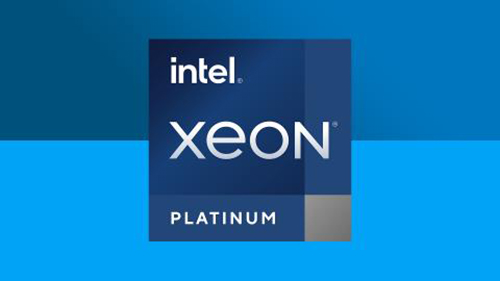
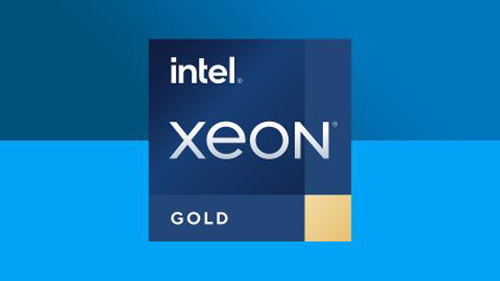
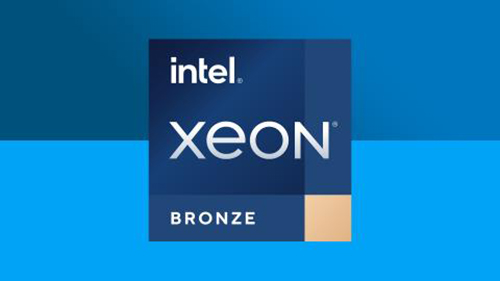
- Review: The 10 Best Wireless Access Points
- Review: The Top 10 Best Ethernet Cables
- What Is An Ethernet Cable And What Does It Do?
- 10 Best CCTV Security IP Cameras For Home & Business
- Review: Best Powerline Adapters In The UK
- Celebrating 20 Years Of Comms Express!
- The Top 10 DrayTek Wireless Access Points
- Best Selling APC Products At Comms Express
- Review: Top 5 Best Performing APC Uninterruptible Power Supply Units (UPS)
- Review: Top 10 Best PDU’s













